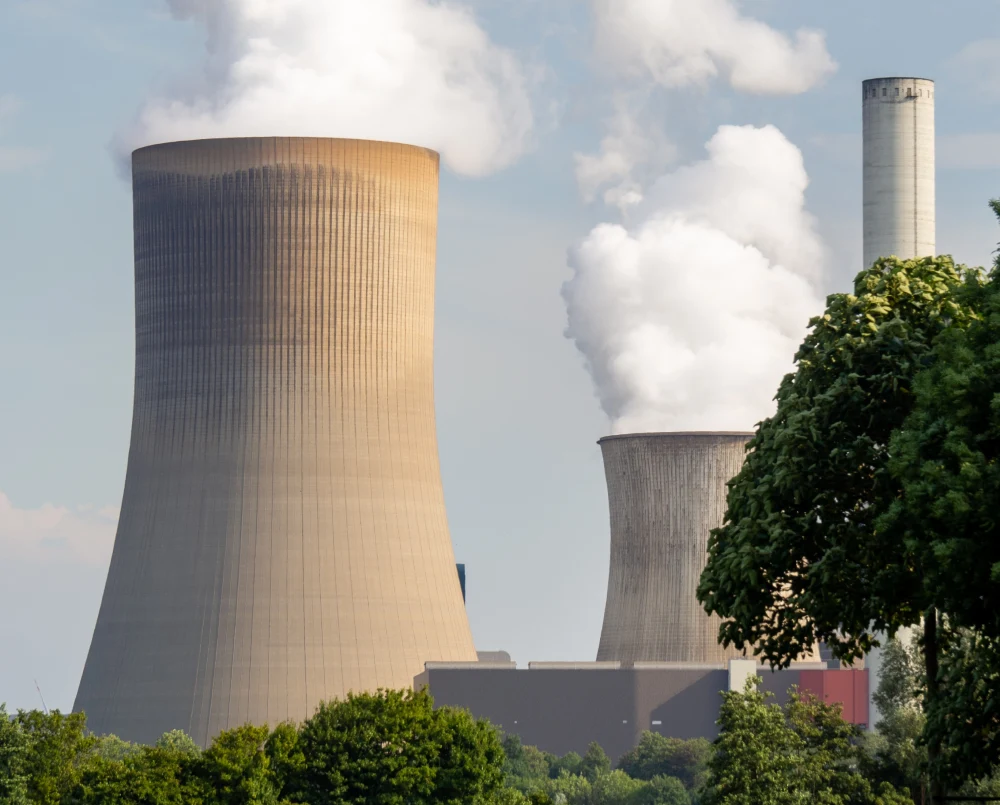Has the Texas Grid Been Winterized?
3 minute readIn February 2021, Winter Storm Uri brought record-breaking cold temperatures to Texas for nearly a week. This storm exposed a
Home > Learning Center > The Deregulated Texas Energy Market > Nuclear Power Plants in Texas: History, Current State, and Future Projections
4 minute read • Last update August 2024

This article sheds light on the critical role of nuclear energy in the Lone Star State, offering a detailed look at its history, current status, and what the future might hold.
Texas hosts two active nuclear power plants with four total reactors, which are pivotal in meeting the state’s energy demands. These plants include:
Together, they contribute significantly to the state’s electricity grid, ensuring a steady supply of power fueled by nuclear fission. These facilities are not just powerhouses of energy; they are also marvels of modern engineering, designed to operate safely and efficiently for decades. The stringent safety protocols and regular maintenance schedules ensure these plants operate at optimal levels, providing a reliable source of power for millions of Texans.
The two nuclear power plants in Texas generate a near constant ~5,000 MW of power, capable of powering millions of homes and businesses. The capacity and output of Texas’ nuclear power plants are a testament to their efficiency.
The high energy density of nuclear power means these plants can produce large amounts of electricity from a relatively small amount of fuel, compared to other energy sources. This efficiency is crucial in a state as large and energy-hungry as Texas, where the demand for electricity is constantly growing due to its booming population and economy.
Nuclear energy plays a vital role in Texas’ diverse energy portfolio. Depending on the total energy demand of the state, Texas’ nuclear power plants account for about 8-12% of the state’s total electricity generation, complementing other sources like natural gas, coal, wind, and solar power.
This balanced energy mix is crucial for Texas, providing stability and resilience to its power grid. Nuclear power’s consistent and reliable output is particularly valuable in meeting base-load demand while also helping to reduce the state’s carbon footprint, as it produces virtually no greenhouse gas emissions during operation.
The history of nuclear energy in Texas is a story of pioneering spirit and technological advancement. The journey began in the late 20th century when Texas, known for its oil and gas reserves, started exploring nuclear power as an alternative energy source. The construction of the first nuclear power plants in the state marked a significant shift in its energy landscape. Over the years, these facilities have not only provided a stable supply of electricity but have also contributed to local economies, creating jobs and supporting communities. The evolution of nuclear technology in Texas reflects the state’s commitment to innovation and its ability to adapt to changing energy needs.
The prospect of new nuclear power plants in Texas is a subject of much interest and debate. This article offers insights into the latest developments and future plans for nuclear energy in the state. It discusses the challenges and opportunities associated with building new nuclear facilities, including technological innovations, regulatory frameworks, and environmental impacts.
Texas, a state known for its vast energy resources, currently operates two nuclear power plant sites with a total of four reactors. These are the South Texas Project Electric Generating Station, located near Bay City, and the Comanche Peak Nuclear Power Plant, situated near Glen Rose. Each of these facilities houses two operational nuclear reactors.
While Texas is a key player in nuclear energy, it’s interesting to note that it does not hold the title for the most nuclear power plants. That distinction goes to Illinois with 11 total reactors. Pennsylvania comes in second with 9 reactors.
However, Texas’ investment in nuclear energy is significant, reflecting its commitment to a diversified energy strategy. The state’s approach to nuclear power, focusing on safety, efficiency, and sustainability, sets a benchmark for others to follow.
Texas produces around 5,000 MW of electricity from 4 nuclear power reactors on a near constant basis. Nuclear power is a key component of the state’s energy mix, contributing a substantial portion of its electricity. This production is not just about meeting current demands but also about planning for a future where clean and reliable energy sources become increasingly important.
Texas is home to over 300 power plants, including nuclear, natural gas, coal, wind, and solar facilities. These plants are strategically located across the state to meet the energy needs of its vast and diverse population efficiently. The history of these plants, including when and where they were built, reflects the state’s evolving energy priorities and its response to technological advancements and environmental considerations.
Texas’ use of nuclear power is driven by several factors. Firstly, nuclear energy provides a stable and reliable source of electricity, essential for a state with a large and growing population. Additionally, nuclear power plays a crucial role in reducing greenhouse gas emissions, aligning with broader environmental goals. The state’s commitment to nuclear energy also stems from its desire to diversify its energy sources, ensuring energy security and resilience against market fluctuations and natural disasters.
The future of nuclear energy in Texas looks promising, with current trends indicating continued reliance and potential growth in this sector. Advances in nuclear technology, such as small modular reactors and next-generation designs, offer new possibilities for safer, more efficient, and more sustainable nuclear power. The state’s energy policies and market dynamics will play a significant role in shaping the trajectory of nuclear energy in Texas. This section explores these trends and projections, offering a forward-looking perspective on how nuclear power might evolve in the coming years.
Graham Lumley, Digital Marketing Manager at BKV Energy, leads digital and traditional marketing strategies, focusing on educating Texans about the state's deregulated energy market. With over 8 years of marketing experience, he creates content to help consumers understand and save on their energy bills, bringing a fresh and dynamic approach to the industry.

In February 2021, Winter Storm Uri brought record-breaking cold temperatures to Texas for nearly a week. This storm exposed a

Switch holds are restrictions placed on electric meters that prevent customers from switching electricity providers. These statuses are meant to
Get $50 off your electric bill!
Use code BKVEJOINUS50
Enter your zip code to shop BKV Energy's affordable, fixed-rate Texas electricity plans. Use the promo code for $50 off your electric bill.